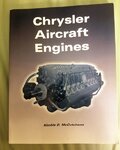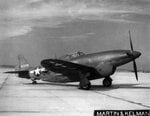chipieal
Airman
I was wondering if anyone had reliable information about this mysterious motor? I have read 1) it did not exist 2) it was inverted? 3) it was significantly slower than existing motors 4) it was actually placed in a P - 47k with a highly modified nose. My question is simple how in god's name did they fit an inline water-cooled motor into a space for a radial? Also, some sources claim 504 mph at 15,000 feet. If this is the case and what I have read on this site is true that the higher a plane flies the faster it can go -- how fast would it have been at say 30,000 feet. The only thing I an sure of is why it was not produced. The time frame indicates that jets were already in service so why bother Lastly, if this has already been discussed, I apologize


